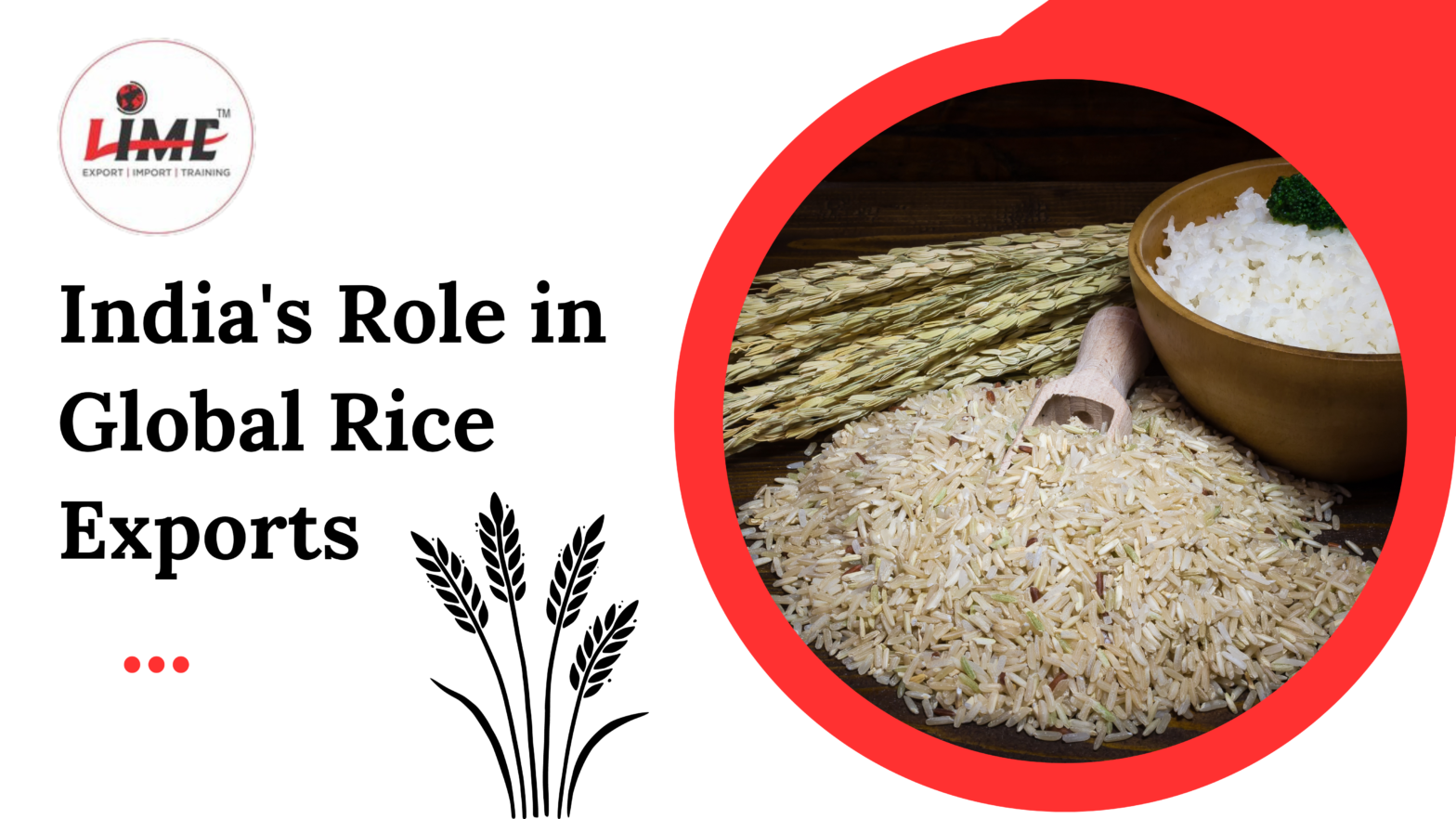
India has a storied history of rice cultivation and export. For centuries, its fertile lands and diverse rice varieties have made it a global hub for rice production. From ancient origins to modern times, India’s role in supplying rice to the world has been significant, impacting global food security and trade. This blog post explores India’s historical journey as a leading player in global rice exports.
Rice holds immense importance in both India’s economy and its rich food culture. It serves as a staple food for the majority of the population, influencing daily diets and culinary traditions. Additionally, rice cultivation plays a pivotal role in India’s agricultural sector, contributing significantly to the nation’s economic stability. In this blog post, we’ll delve deeper into the integral role of rice in India’s economic and cultural landscape.
Current Trends in Global Rice Exports
India is the world’s largest exporter of rice, accounting for more than 40% of global exports in 2022. Thailand is the second largest exporter, followed by Vietnam and Pakistan. The top importers of rice are China, Bangladesh, Indonesia, and the Philippines. Global rice exports have been increasing in recent years, due to growing demand from developing countries. However, the recent export ban by India has caused some uncertainty in the global rice market.
India’s export ban is in response to rising inflation and concerns about food security. The ban is expected to affect about 10% of global rice exports. The ban is likely to lead to higher rice prices in some countries, especially those that rely on India for imports. It is also likely to disrupt the global rice trade and make it more difficult for countries to secure their rice supplies.
The full impact of the India export ban is still uncertain, but it is likely to have a significant impact on the global rice market. The ban is a reminder of the importance of food security and the need to diversify food imports.
The war in Ukraine has also disrupted global wheat exports, which has led to increased demand for rice. The climate crisis is also affecting rice production, as extreme weather events are becoming more common. These factors are likely to keep global rice prices high in the coming years.
Key players in the industry
The key players in the global rice industry are India, Thailand, Vietnam, Pakistan, China, the United States, Brazil, Indonesia, and Bangladesh. These countries are involved in the production, processing, distribution, and marketing of rice. The global rice industry is a complex and competitive one, and the key players are constantly innovating and finding new ways to improve their products and services. They are also facing a number of challenges, such as climate change, rising labor costs, and changing consumer preferences. Despite these challenges, the global rice industry is expected to continue to grow in the coming years. The growing population and increasing demand for rice in developing countries are the main drivers of this growth.
India’s Position in Global Rice Exports
India is the world’s largest exporter of rice, accounting for more than 40% of global exports in 2022. However, its position in the global rice export market is facing some challenges, including climate change, increasing demand, and competition from other exporters.
In addition to these challenges, India’s recent export ban on non-basmati rice is expected to have a significant impact on its position in the global rice export market. The ban is expected to lead to higher rice prices in some countries, especially those that rely on India for imports. It is also likely to disrupt the global rice trade and make it more difficult for countries to secure their rice supplies.
The full impact of the India export ban is still uncertain, but it is likely to have a significant impact on the global rice market. The ban is a reminder of the importance of food security and the need to diversify food imports.
To summarize, India’s position in the global rice export market is strong, but it is facing some challenges. The recent export ban on non-basmati rice is a temporary measure, but it could have a lasting impact on the global rice market. Other countries, such as Thailand and Vietnam, are likely to benefit from the India export ban. The India export ban could lead to higher rice prices in some countries, especially those that rely on India for imports. The India export ban is a reminder of the importance of food security and the need to diversify food imports.
Insights into India’s Rice Exports
India’s rice export industry is a major driver of the country’s economy. The industry is expected to continue to grow in the coming years, driven by factors such as large production, competitive prices, and variety of rice. However, the industry will need to address the challenges of climate change and increasing competition in order to maintain its growth.
Here are some of the key factors that are driving the growth of India’s rice export industry:
Large production: India is the world’s second largest producer of rice, with a production of about 200 million tonnes per year. This large production base gives India a significant advantage in the global rice export market.
Competitive prices: India’s rice is relatively inexpensive compared to other major exporters. This is due to a number of factors, including low labor costs and favorable government policies. The competitive prices of Indian rice make it an attractive option for buyers in many countries.
Variety of rice: India produces a variety of rice varieties, including basmati rice, which is a premium variety that is popular in many countries. This variety gives India a competitive edge in the global rice export market.
Here are some of the key challenges that the Indian rice export industry is facing:
Climate change: Climate change is affecting rice production in India, as it is leading to more extreme weather events, such as droughts and floods. These events can damage crops and lead to lower yields. Climate change is a major challenge facing the Indian rice industry, and it is likely to have a significant impact on the industry in the coming years.
Increasing demand: The demand for rice is increasing in both developing and developed countries. The increase in global rice consumption can be attributed to several factors, including a growing population, higher incomes, and shifting dietary preferences. The increasing demand for rice is a major opportunity for the Indian rice industry, but it also poses a challenge, as it will be difficult to meet the growing demand.
Competition from other exporters: Other countries, such as Thailand and Vietnam, are also major exporters of rice and are increasing their production. This competition is a challenge for the Indian rice industry, as it will make it more difficult to export rice at competitive prices.
Despite these challenges, the future outlook for India’s rice export industry is positive. The industry is expected to continue to grow in the coming years, driven by the factors mentioned above. However, the industry will need to address the challenges of climate change and increasing competition in order to maintain its growth.
Major factors contributing to the success or failure of India’s rice exports
Production: India is the world’s second largest producer of rice, with a production of about 200 million tonnes per year. This large production base gives India a significant advantage in the global rice export market. However, if there is a decline in production due to factors such as climate change or pests, it can lead to a decrease in exports.’
Price: India’s rice is relatively inexpensive compared to other major exporters. This is due to a number of factors, including low labor costs and favorable government policies. The competitive prices of Indian rice make it an attractive option for buyers in many countries. However, if the prices of Indian rice become too high, it can make it less competitive in the global market.
Quality: India produces a variety of rice varieties, including basmati rice, which is a premium variety that is popular in many countries. This variety gives India a competitive edge in the global rice export market. However, if the quality of Indian rice is not up to the standards of international buyers, it can lead to a decline in exports.
Infrastructure: India has a well-developed infrastructure for rice production, processing, and transportation. This infrastructure makes it easy and efficient to export rice from India. However, if there are disruptions to the infrastructure, such as port strikes or bad weather, it can lead to delays or cancellations of exports.
Government policies: The Indian government plays a significant role in the rice export industry. The government provides subsidies to farmers, regulates the export market, and negotiates trade deals with other countries. These policies can have a major impact on the success or failure of India’s rice exports.
Demand: The demand for rice is increasing in both developing and developed countries. This is due to a number of factors, such as population growth, rising incomes, and changing dietary habits. The increasing demand for rice is a major opportunity for the Indian rice industry. However, if the demand for rice declines, it can lead to a decrease in exports.
Overall, the success or failure of India’s rice exports is determined by a number of factors, including production, price, quality, infrastructure, government policies, and demand. The industry is expected to continue to grow in the coming years, but it will need to address the challenges of climate change and increasing competition in order to maintain its growth.
Economic, political and environmental factors affecting India’s rice industry
The economic, political, and environmental factors affecting India’s rice industry are complex and interrelated. Some of the key factors include increasing demand, inflation, government policies, political instability, trade barriers, international agreements, climate change, water scarcity, and pests and diseases. The Indian rice industry is expected to continue to grow in the coming years, but it will need to address these challenges in order to maintain its growth. The industry can do this by investing in research and development, improving irrigation efficiency, and diversifying its export markets.
Challenges and Opportunities
India is the world’s largest exporter of rice, but it faces a number of challenges in maintaining its position in the global market. These challenges include climate change, increasing competition, trade barriers, and government policies.Climate change is affecting rice production in India, as it is leading to more extreme weather events, such as droughts and floods. These events can damage crops and lead to lower yields, which can lead to a decrease in the supply of rice available for export.Increasing competition is another challenge for the Indian rice industry. Other countries, such as Thailand and Vietnam, are also major exporters of rice and are increasing their production. This competition will make it more difficult for India to export rice at competitive prices.Trade barriers, such as tariffs and quotas, can also make it difficult for India to export rice to other countries. These barriers can limit the market for Indian rice and make it more difficult to compete with other exporters.Government policies can also affect the Indian rice industry. The Indian government provides subsidies to farmers, regulates the market, and negotiates trade deals with other countries. These policies can have a major impact on the industry, and they could change in the future, making it more difficult for India to export rice.The Indian rice industry is expected to continue to grow in the coming years, but it will need to address these challenges in order to maintain its growth. The industry can do this by investing in research and development to develop more resilient rice varieties, improving irrigation efficiency, and diversifying its export markets.
I hope you enjoyed this post on India’s role in global rice exports. What do you think are the biggest challenges facing India’s rice exports? What do you think India can do to maintain its position as the world’s largest exporter of rice? You’re welcome to express your thoughts in the comments below.






